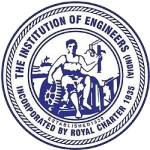Promoting the Reuse of C&D Wastes with Better Properties via Construction Made from Recycled Concrete Aggregates.
Abstract
The demand of infrastructure has increased strikingly due to increasing populace and improved standard of living. Construction sector has witnessed record development due to change in its policies and India being a developing country is seeing ascent in the construction activities. The change is an unavoidable part for rapid urbanization and demolition and reconstruction are the basic necessities for redevelopment. Construction and Demolition (C&D) squanders become a crucial ecological difficulty because C&D squanders are non-biodegradable. In this paper an analytical study is engulfed which incorporates Recycled Concrete Aggregate (RCA) obtained from C&D squanders as a halfway replacement of fine aggregate in Self-Compacting Concrete (SCC) utilizing Two Stage Mixing Approach Method (TSMA) to acquire a concrete with durability properties better than Normal Mixing Approach (NMA).
Downloads
References
P. Rajhans, S. K. Panda, and S. Nayak, “Sustainable self compacting concrete from C&D waste by improving the microstructures of concrete ITZ,” Constr. Build. Mater., vol. 163, pp. 557–570, Feb. 2018, doi: 10.1016/j.conbuildmat.2017.12.132.
P. Rajhans, S. K. Panda, and S. Nayak, “PROPERTIES OF SELF COMPACTED RECYCLED AGGREGATE CONCRETE (SCRAC) WITH DIFFERENT TWO STAGE MIXING APPROACHES,” p. 8.
V. Revilla-Cuesta et al., “Self-compacting concrete manufactured with recycled concrete aggregate: An overview,” J. Clean. Prod., vol. 262, 2020, doi: 10.1016/j.jclepro.2020.121362.
V. S. Babu, A. K. Mullick, K. K. Jain, and P. K. Singh, “Strength and durability characteristics of high-strength concrete with recycled aggregate – influence of mixing techniques,” J. Sustain. Cem.-Based Mater., vol. 3, no. 2, pp. 88–110, Apr. 2014, doi: 10.1080/21650373.2013.874302.
S. Shahidan, M. A. M. Azmi, K. Kupusamy, S. S. M. Zuki, and N. Ali, “Utilizing Construction and Demolition (C&D) Waste as Recycled Aggregates (RA) in Concrete,” Procedia Eng., vol. 174, pp. 1028–1035, 2017, doi: 10.1016/j.proeng.2017.01.255.
Q. Tang, Z. Ma, H. Wu, and W. Wang, “The utilization of eco-friendly recycled powder from concrete and brick waste in new concrete: A critical review,” Cem. Concr. Compos., vol. 114, p. 103807, Nov. 2020, doi: 10.1016/j.cemconcomp.2020.103807.
D. Yang, M. Liu, and Z. Ma, “Properties of the foam concrete containing waste brick powder derived from construction and demolition waste,” J. Build. Eng., vol. 32, p. 101509, Nov. 2020, doi: 10.1016/j.jobe.2020.101509.
A. K. Kasthurba and K. R. Reddy, “Managing Building Waste for Sustainable Urban Development: Challenges, Opportunities and Future Outlook”.
A. R. Chini and S. Bruening, “Deconstruction and materials reuse in the United States,” Future Sustain. Constr., vol. 14, 2003.
D. Yang, M. Liu, and Z. Ma, “Properties of the foam concrete containing waste brick powder derived from construction and demolition waste,” J. Build. Eng., vol. 32, p. 101509, Nov. 2020, doi: 10.1016/j.jobe.2020.101509.
M. R. Esa, A. Halog, and L. Rigamonti, “Developing strategies for managing construction and demolition wastes in Malaysia based on the concept of circular economy,” J. Mater. Cycles Waste Manag., vol. 19, no. 3, pp. 1144–1154, Jul. 2017, doi: 10.1007/s10163-016-0516-x.
S. Shrivastava and A. Chini, “Construction materials and C&D waste in India,” Lifecycle Des. Build. Syst. Mater., vol. 72, 2009.
S. Uniyal and V. Aggrawal, “Two-Stage Mixing Approach (TSMA) Versus Normal Mixing Approach (NMA) For Concrete in Terms of Compressive Strength And Carbonation Depth,” Int J Sci Res Dev, vol. 2, pp. 721–725, 2014.
T. Manikandan, M. Mohan, and Y. M. Siddaharamaiah, “Strength Study on Replacement of Coarse Aggregate by Reused Aggregate on Concrete,” vol. 2, no. 4, p. 4.
S. Ismail and M. Ramli, “Mechanical strength and drying shrinkage properties of concrete containing treated coarse recycled concrete aggregates,” Constr. Build. Mater., vol. 68, pp. 726–739, Oct. 2014, doi: 10.1016/j.conbuildmat.2014.06.058.
B. A. Harish, N. V. Ramana, and K. Gnaneswar, “Experimental and analytical studies on recycled coarse aggregate concrete,” Mater. Today Proc., vol. 46, pp. 294–300, 2021.
A. Sičáková, K. Urbán, and M. Kováč, “Slump Loss of Concrete Based on RCA and Prepared by Specific Mixing Approach,” Period. Polytech. Civ. Eng., vol. 62, no. 4, Art. no. 4, Sep. 2018, doi: 10.3311/PPci.11733.
N. Su, K.-C. Hsu, and H.-W. Chai, “A simple mix design method for self-compacting concrete,” Cem. Concr. Res., p. 9, 2001.
A. Barbosa et al., “Analysis Of Reinforced Concrete Structures Using Ansys Nonlinear Concrete Model.”
Copyright (c) 2021 Pradyut Anand, Swagata Chakraborty

This work is licensed under a Creative Commons Attribution 4.0 International License.
I/We agree with the provision of the Bye-Law 118 of The Institution of Engineers (India) which states that copyright of each paper published in Institution Journal or Annual Technical Volume in full or in Abstract at its centres shall lie with the Institution.

